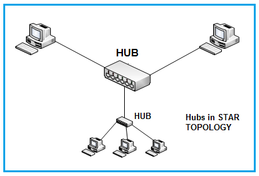Piggybacking in Computer Networks: Definition, Benefits, and Drawbacks
Advertisement
Piggybacking is a technique used to optimize the efficiency of data transmission, especially in network protocols like TCP (Transmission Control Protocol) and acknowledgments in wireless communication.
In the context of network protocols like TCP, piggybacking occurs when one data packet is attached or “piggybacked” onto another packet for transmission. This is typically done to reduce network overhead and improve efficiency.
The process of carrying the acknowledgement along with the data on the same channel is known as piggybacking in computer networks. In data communication, the transmitter transmits the data packet and waits for acknowledgment from the other end before it starts transmitting the next packet. This can be achieved in two ways:
- Method #1: There will be two separate channels, one channel is used for the transmission of data in the forward direction and the other channel is used for the transmission of ACK in the reverse direction.
- Method #2: There will be a single channel used for the transmission of data/ACK but one at a time.

Method #1 reduces bandwidth efficiency by utilizing the entire channel for ACK. Moreover, method #2 introduces a delay between successive packet or frame transmissions. The above-mentioned drawbacks are avoided by transmitting ACK along with the data packet. Hence problems encountered in both the methods can be avoided.

The figure above depicts piggybacking working between two users A and B. In normal data communication between user-A and user-B, for each data frame there is an ACK frame in both the directions. The piggybacking concepts prevent separate ACK frame transmission and combine it with the data frame for both the directions (if there is an ACK to be transmitted).
Benefits or Advantages of Piggybacking
Following are the benefits or advantages of Piggybacking:
- It increases network efficiency by combining multiple types of data or control information into a single packet. This reduces the number of packets on the network which saves bandwidth and reduces overload load on the network.
- It reduces latency in delivering data and acknowledgments. The low latency is essential in real time and interactive applications.
- It can help in conserving network resources such as bandwidth and processing power. This is important in resource-constrained environments.
Drawbacks or Disadvantages of Piggybacking
Following are the drawbacks or disadvantages of Piggybacking:
- Piggybacking implementation adds complexity to network protocols and systems.
- While it can reduce latency in some cases, it can introduce delays if control information is held back to be piggybacked on a later packet. This will be troublesome if the control information is time-sensitive.
- When multiple types of information are combined in a single packet, error handling becomes more complex. If an error occurs in part of the packet, it affects the entire packet including unrelated data.
- It may not be supported or handled correctly by all network devices and protocols which may lead to compatibility issues.
- Though it can reduce overhead in many situations, in some cases, it might actually increase overhead if control information is extensive or if it results in larger packets that require fragmentation.
Conclusion
In summary, piggybacking can be a useful technique to improve the efficiency of data communication. The decision to use piggybacking should be based on the trade-offs between efficiency and complexity, as well as the needs of the specific communication scenario.
Advertisement
 RF
RF







